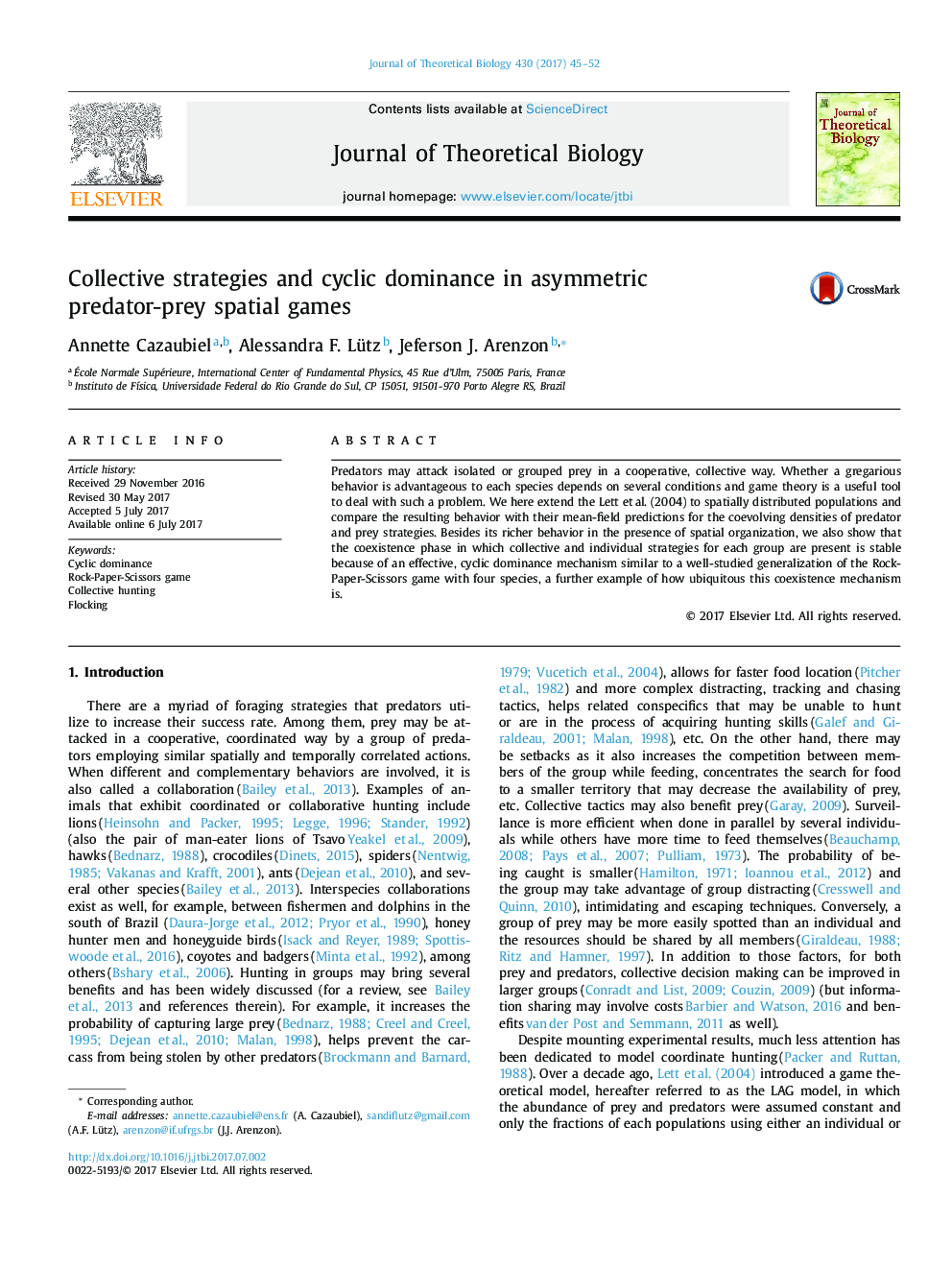| Article ID | Journal | Published Year | Pages | File Type |
|---|---|---|---|---|
| 5760317 | Journal of Theoretical Biology | 2017 | 8 Pages |
Abstract
Predators may attack isolated or grouped prey in a cooperative, collective way. Whether a gregarious behavior is advantageous to each species depends on several conditions and game theory is a useful tool to deal with such a problem. We here extend the Lett etâ¯al. (2004) to spatially distributed populations and compare the resulting behavior with their mean-field predictions for the coevolving densities of predator and prey strategies. Besides its richer behavior in the presence of spatial organization, we also show that the coexistence phase in which collective and individual strategies for each group are present is stable because of an effective, cyclic dominance mechanism similar to a well-studied generalization of the Rock-Paper-Scissors game with four species, a further example of how ubiquitous this coexistence mechanism is.
Keywords
Related Topics
Life Sciences
Agricultural and Biological Sciences
Agricultural and Biological Sciences (General)
Authors
Annette Cazaubiel, Alessandra F. Lütz, Jeferson J. Arenzon,
